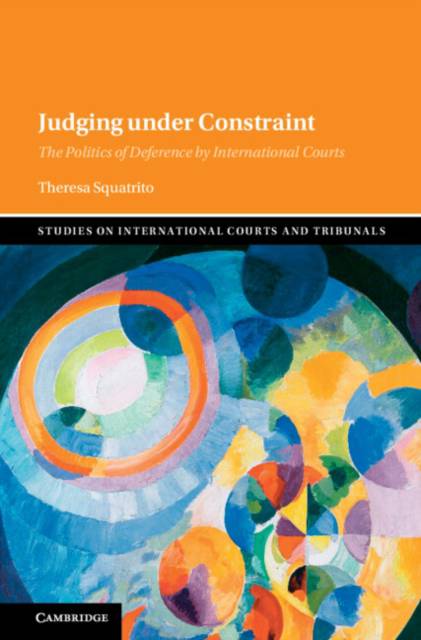
- Afhalen na 1 uur in een winkel met voorraad
- Gratis thuislevering in België vanaf € 30
- Ruim aanbod met 7 miljoen producten
- Afhalen na 1 uur in een winkel met voorraad
- Gratis thuislevering in België vanaf € 30
- Ruim aanbod met 7 miljoen producten
Zoeken
€ 201,95
+ 403 punten
Omschrijving
As international courts have risen in prominence, policymakers, practitioners and scholars observe variation in judicial deference. Sometimes international courts defer, whereby they accept a state's exercise of authority, and other times not. Differences can be seen in case outcomes, legal interpretation and reasoning, and remedial orders. How can we explain variation in deference? This book examines deference by international courts, offering a novel theoretical account. It argues that deference is explained by a court's strategic space, which is structured by formal independence, seen as a dimension of institutional design, and state preferences. An empirical analysis built on original data of the East African Court of Justice, Caribbean Court of Justice, and African Court of Human and Peoples' Rights demonstrates that robust safeguards to independence and politically fragmented memberships lend legitimacy to courts and make collective state resistance infeasible, combining to minimize deference. Persuasive argumentation and public legitimation also enable nondeference.
Specificaties
Betrokkenen
- Auteur(s):
- Uitgeverij:
Inhoud
- Aantal bladzijden:
- 376
- Taal:
- Engels
- Reeks:
Eigenschappen
- Productcode (EAN):
- 9781009607612
- Verschijningsdatum:
- 13/11/2025
- Uitvoering:
- Hardcover
- Formaat:
- Genaaid
- Afmetingen:
- 152 mm x 229 mm
- Gewicht:
- 671 g

Alleen bij Standaard Boekhandel
+ 403 punten op je klantenkaart van Standaard Boekhandel
Beoordelingen
We publiceren alleen reviews die voldoen aan de voorwaarden voor reviews. Bekijk onze voorwaarden voor reviews.








